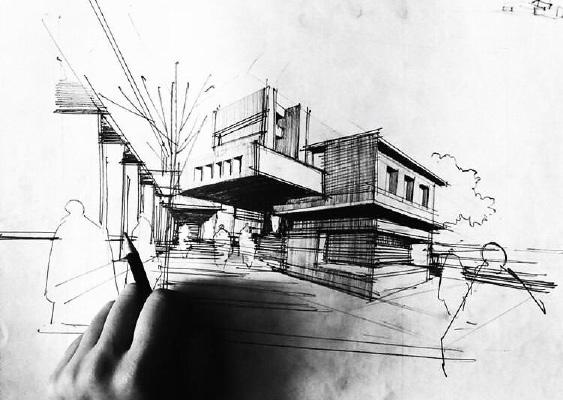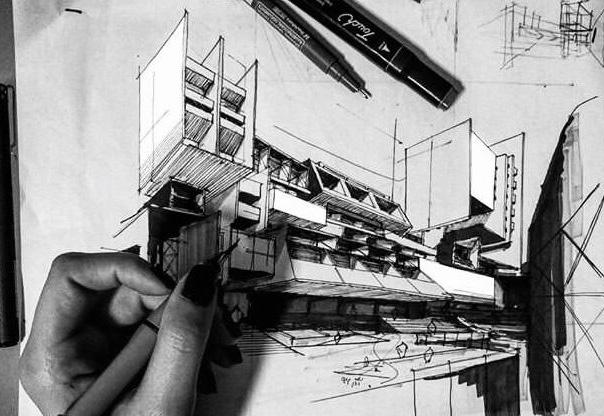Sketches

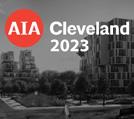
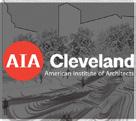
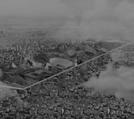
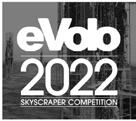
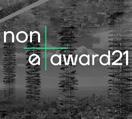


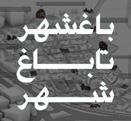










Year:2023
Company: MEPIS+A
Location: Chicago
Nationally Recognized project with 300m dollars fund raising
My Role: Schematic Design, Design Process, Diagramming, 3D Modeling, Rendering
Softwares: Revit, Rhino, Enscape, Illustrator
Diveheart, the deepest pool in the USA, envisions a groundbreaking aquatic destination with three specialized pools—Diving, Community, and Therapy. Diveheart caters to diverse interests, from scuba diving and water training to therapy programs and scientific research. The facility prioritizes accessibility and inclusivity for disabled individuals, offering adaptive scuba opportunities. With a commitment to sustainability and cutting-edge technology, Diveheart integrates patented deep therapy pool features, providing a safe and transformative experience. The facility emphasizes visibility, safety, and a connection with nature, fostering community engagement and education. It also emerges as a unique hub for recreational activities and a center for health and wellness, science, and therapeutic rehabilitation.

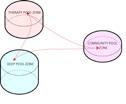

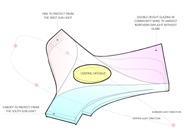






































































THERAPY POOL: CONNECTION TO NATURE
Year:2023
Company: MEPIS+A
Location: Chicago
My Role: Desgin process, Diagramming, 3D Modeling, Rendering, Landscape Design
Softwares: Revit, Enscape, Illustrator, InDesign
The addition of a new skylight in the lobby, a rooftop space, a connecting staircase, and a canopy for the drop-off area indicates a thoughtful approach to enhancing both the functionality and aesthetic appeal of the office environment. Skylight for Lobby:Introduce natural light, Open, inviting space; energy efficiency. Rooftop Workspace: Outdoor work and recreation, Employee well-being; green space, Solar Panels
Connecting Staircase: Foster collaboration, Visual focal point Drop-off Canopy: Weather protection, Architectural statement; design identity.

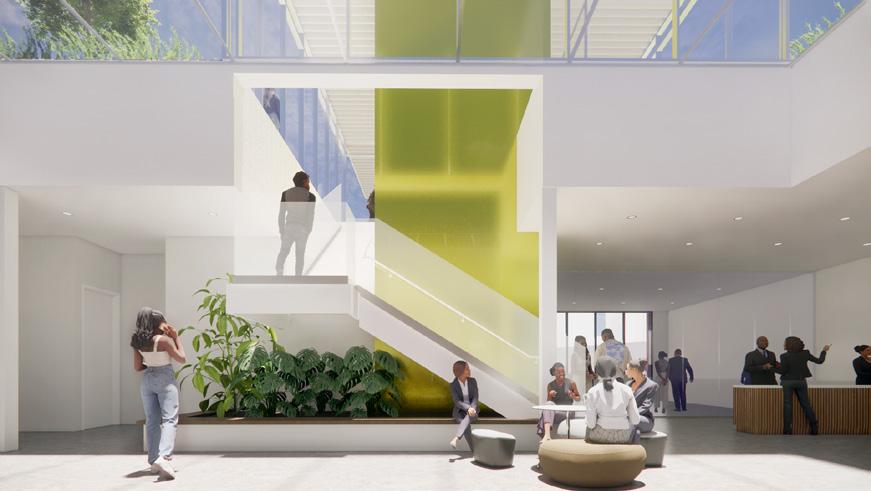
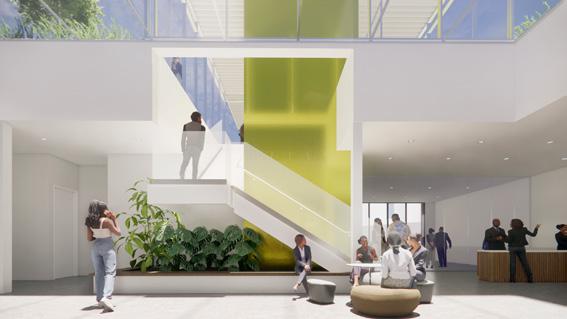
Category : Mixed-use/ Residential and commercial
Year:2021
Location: Iran
Desgin Team: Maryam Baharvandi, Mahsa Imani
Softwares: 3Ds Max, AutoCAD, Vray,Photoshop, Illustrator
B house: a 1-floor, 1300 sq.Ft residential project. The first floor features a private 2-bedroom residence with contemporary concrete and a Thermowood facade. Since it has access to the light just from one direction, there is a backyard, which makes two bedrooms enjoy backyard access for enhanced illumination and ventilation. It was important to the client to prior the living room to the lighting rather than the private parts.

Year:2025
Competition/Group Project
My Role: Design Process and Development, 2D and 3D Diagrams Group Members: Hossein mousavi, Maryam Baharvandi, Ali Jamali, amirhossein Majd

The Vernacular Nursery School of Senegal is an attempt to demonstrate that architecture can offer a creative and responsible response to the real needs of people—especially children—within their cultural and climatic context. By drawing on traditional patterns such as Wolof homes, making thoughtful use of local materials like earth, timber, and bamboo, and involving the community actively in the building process, we sought to create a space where learning, play, nature, and culture coexist in harmony. This project responds to a simple yet profound human need: That a child can grow in a place that is familiar, human, and rooted in nature—a place where they can take their very first steps toward building a brighter future. his project is a humanitarian initiative aimed at creating an educational and nurturing space through the design of a vernacular nursery school in Senegal. The design process weaves together the developmental and educational needs of young children with a deep understanding of local culture, climate, and indigenous resources. From the outset, our goal extended far beyond constructing a mere educational facility; we aspired to craft a space where the Senegalese child, nature, culture, and learning coexist in a dynamic and creative dialogue.
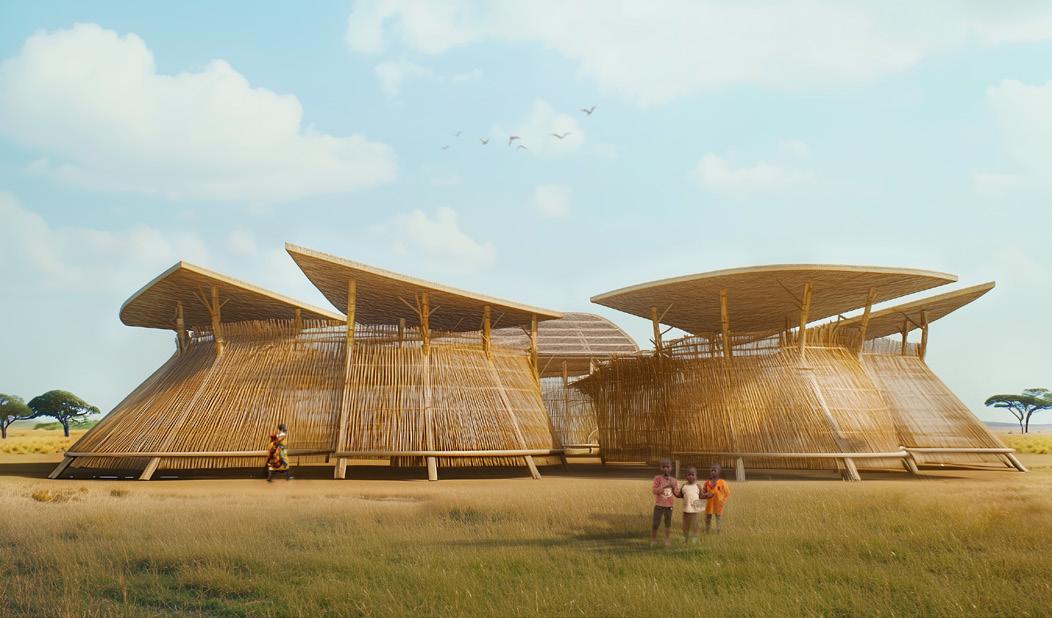

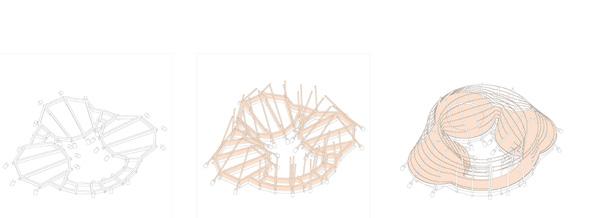
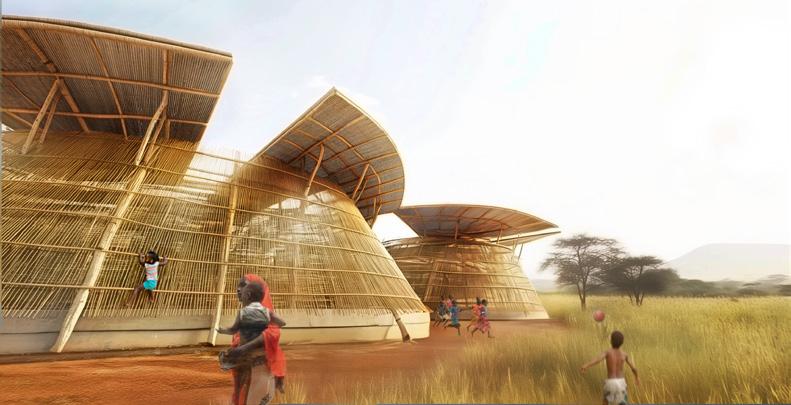


In the rural communities of West Africa, children are considered a vital part of the social and cultural fabric. From the earliest stages of life, they are immersed in both natural and communal environments, learning essential life skills through direct interaction with the world around them. Our design seeks to honor and reinforce this connection— by employing a spatial language and materials that feel familiar, intuitive, and meaningful to the child. The core concept of this project is drawn from the traditional homes of the Wolof people in Senegal. These dwellings are typically arranged in circular formations around a central communal space—an architectural language that is not only functionally efficient but also evokes a familiar sense of living for the local child. This circular pattern extends beyond architecture; it encapsulates the very essence of Senegalese cultural and social life. Within the project’s fluid spatial narrative, children are invited to live, feel, and play within these historical and communal rhythms— transforming collective memory into everyday experience. The core concept of this project is drawn from the traditional homes of the Wolof people in Senegal. These dwellings are typically arranged in circular formations around a central communal space—an architectural language that is not only functionally efficient but also evokes a familiar sense of living for the local child. This circular pattern extends beyond architecture; it encapsulates the very essence of Senegalese cultural and social life. Within the project’s fluid spatial narrative, children are invited to live, feel, and play within these historical and communal rhythms— transforming collective memory into everyday experience.

This design approach also fosters a sense of community, safety, and freedom for children—much like the Wolof homes that, for generations, offered a space to live collectively and harmoniously with nature. In this nursery school, nature is not treated as a decorative backdrop, but as an integral part of the architecture itself. To achieve this, the boundaries between interior and exterior spaces have been minimized. Classrooms and learning areas feature large openings and natural ventilation, allowing breezes, sunlight, and the ambient sounds of nature to gently flow into the space.
This design approach also fosters a sense of community, safety, and freedom for children—much like the Wolof homes that, for generations, offered a space to live collectively and harmoniously with nature. In this nursery school, nature is not treated as a decorative backdrop, but as an integral part of the architecture itself. To achieve this, the boundaries between interior and exterior spaces have been minimized. Classrooms and learning areas feature large openings and natural ventilation, allowing breezes, sunlight, and the ambient sounds of nature to gently flow into the space.
A fundamental aim of this project was to create an opportunity for collective construction by the local community. The design was intentionally developed so that all phases of construction could be carried out without heavy machinery, relying solely on local labor.
This approach carries several key benefits:
– Reduced costs and minimal dependence on external equipment
– Transfer of construction knowledge and practical skills to the community



Year:2021
Competition/Group Project
My Role: Design Process and Development, 2D and 3D Diagrams



When re-thinking and re-reading the old elements, produce new architectural forms, at the same time, they reveal hidden aesthetic features that were initially invisible to us.
In re-defining the project planning and project issue in order to activate its facilities and capacities, the site and the program were expanded. In the Wproposed plan, the site area and its design problem have been developed from the design of the entrance counter and the mainentrance to the whole complex. In this way, the project has expanded a new layer in redefining architecture and turning it into objects to be seen. In this project, we re-think and re-read the architecture and historical Isfahan objects. collected objects from the history of this city have been detached and deconstructed from their previous context and finally they are recreating in a new and weird condition.
This project is formed from the assemblage of founded objects and in the new context, it has gone beyond the previous condition and distanced from itself.
In this way, the «Objects’ City-Garden» is born in the middle of this city in a weird reality.
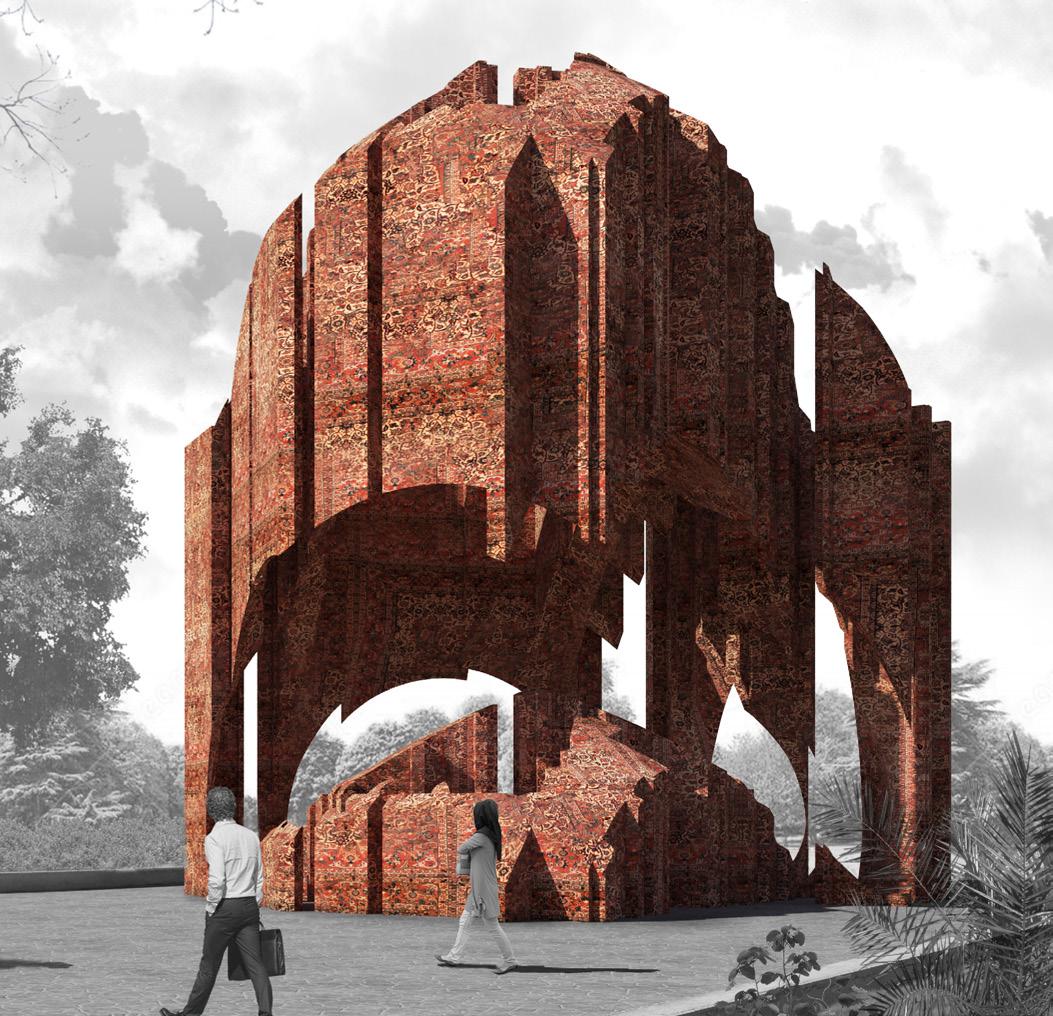
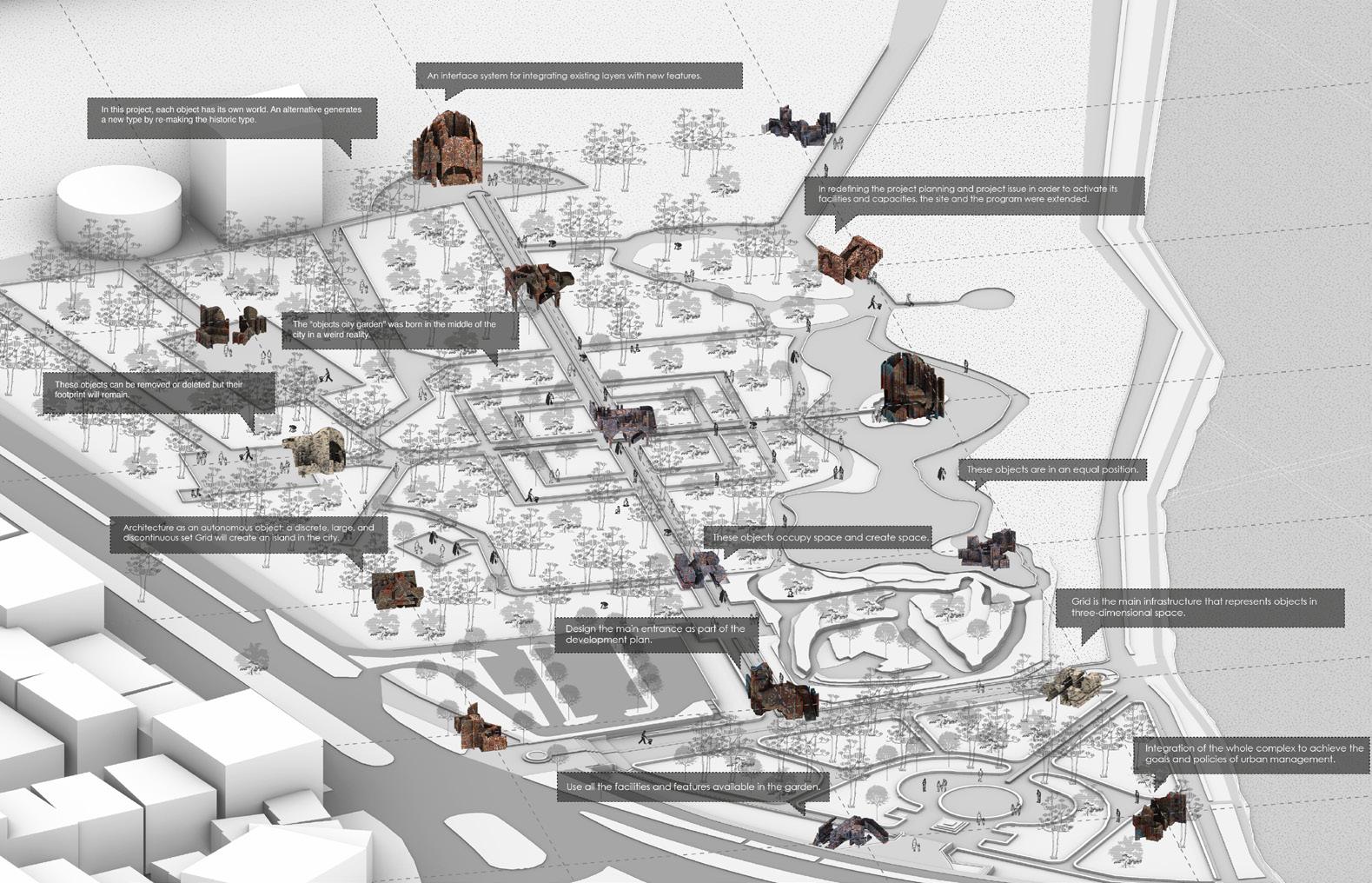
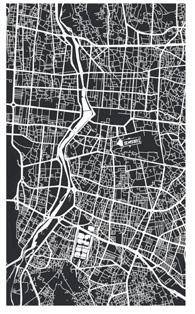



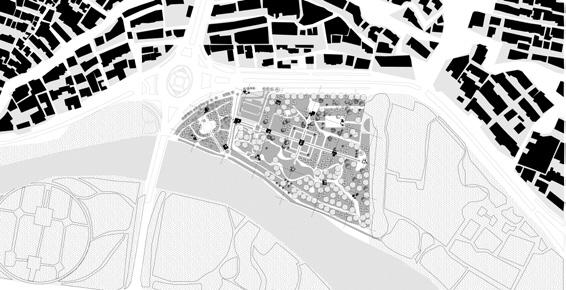




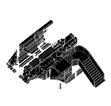

What if we avoided detailed restricted schedule? f
We avoid giving functionalityW to architecture because we think that new architectural objects that have been created have no predefined definition and these are the people who can walk among them, play sports or even have an artist to set up a gallery in them. Our idea is that artists and people to be able to use all of these objects, their lands and spaces
What if we think of an alternative ? f
Re-thinking the form and shape of historical and traditional carpets will reactivate the capacity of this object as a decoration
The carpet texture, which in the X and Y axes tries to represent the space like flower gardens, was used in an alternative way to ornament objects that have been somehow recreated in the Z-axis and this has led to the reproduction of the flower garden on this axis.In this way, the form and shape of Isfahan traditional carpets are out of the previous familiar position (spread on the ground) and used in the weird reality and unfamiliar situation
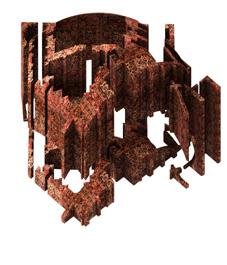



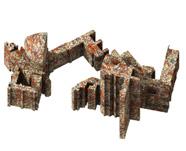



Year:2020
Competition/Group Project
Group Members: Hossein Mosavi,Maryam Baharvandi,Shayan Adham,Ali
My Role: Design development, Diagram development
The importance of the unique nature of Latvia, listed as a nature conservation area by UNESCO, on the one hand, and the fact that the horses of this area are close to extinction, on the other hand, motivated us to see this project beyond mere tower architecture. Instead of a tower for viewing, our project is a tower for being viewed- a project which emphasizes its circumference to highlight the importance of the unique nature of this conservation area and the environment of endangered horses.


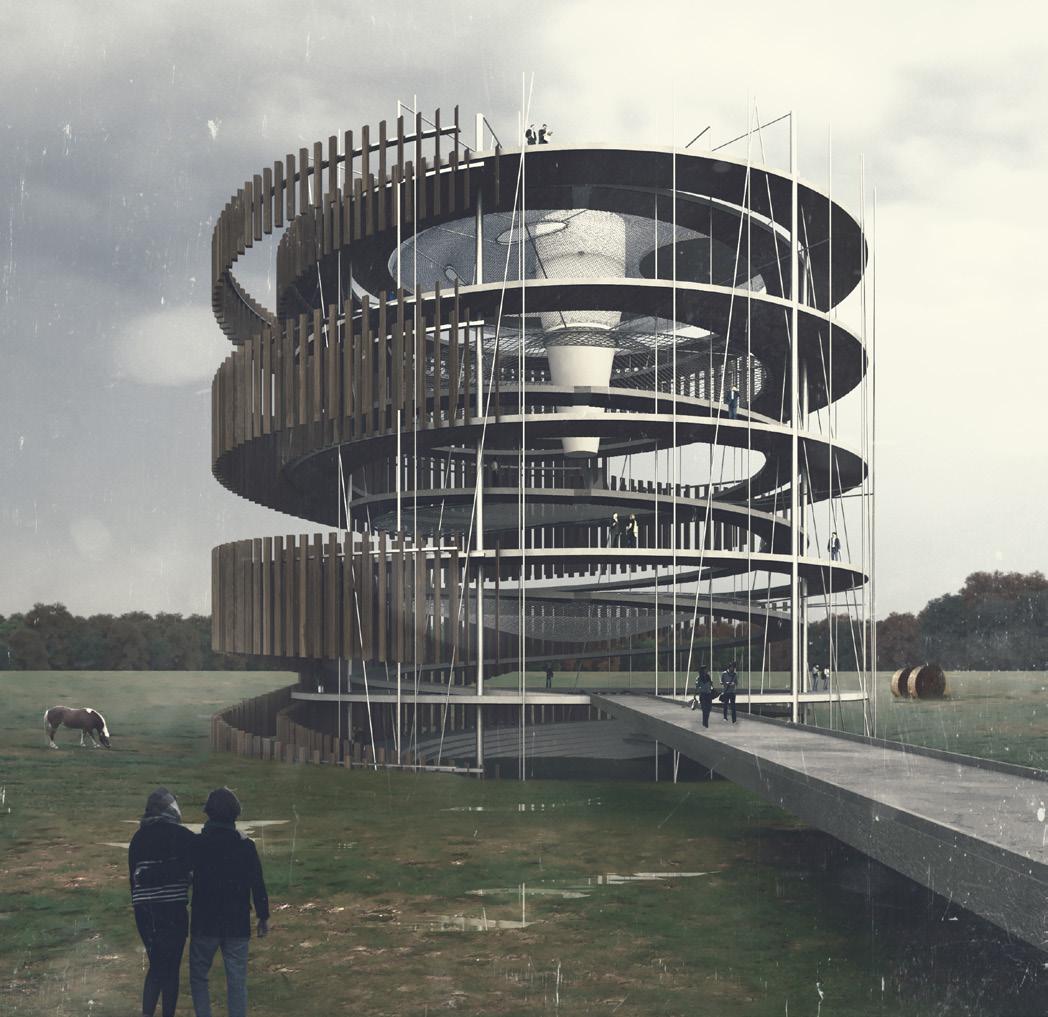
This tower is not constructed with the aim of dominancy to the environment; it is also built to provide the maximum possible transparency and exposure. These ideas led to emptying the masses and replacing them with transparent programs. Multiple internal layers of the tower determine our social interactivity plans. The importance of building an infrastructure filled by group activities performed inside the tower increases by two folds due to the vicinity of the project location to borders. Accenting the importance of group activities was a key design factor that made it possible to put different folks and cultures near each other within the environment background and green bed. This way, visiting the tower and enjoying the environment will become a communal enjoyment and personal activity. The further we go from the tower core towards its external body, the calmer group activities we face.


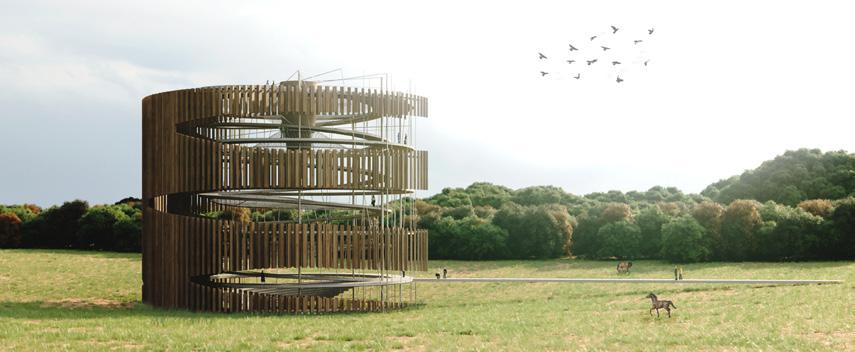

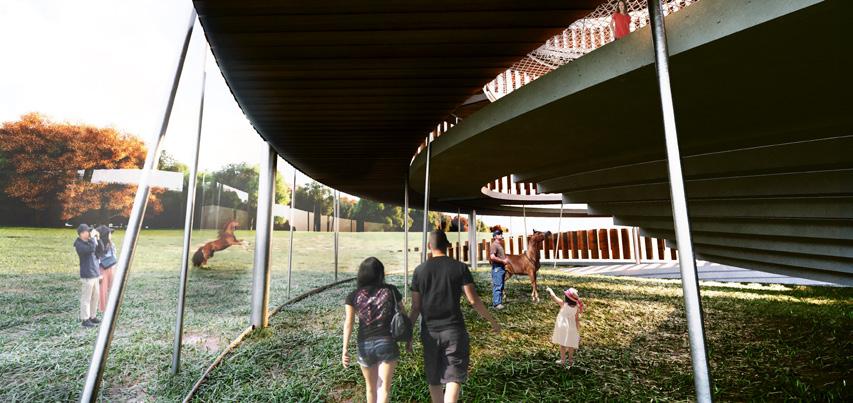
The existence of an open area in the heart of green pastures and far from any habitation will raise these questions: how should our building communicate with around circumference? How is the visual relationship established between the tower and around the rim? How do pedestrians and drivers access the building? What is the role of the yard-owned building in the project?
For us, the first important fact is that the tower is close to the center of Estonia. This caused our plans to be shifted to interactive and exhibitive ones. Preparing galleries in which the artistic works of two countries are introduced and providing exhibition and concert areas are among such plans which both lead to the cultural rapprochement of the countries and invite other countries to contribute to this interaction and dialogue. Among these plans, the classification of landscapes in terms of height and the definition of the tower functions. So that lower noise pollution functions were laid out at heights in our design. The ground floor serves as an exhibition salon. An additional salon on this floor introduces the rare species of Kurgi horse and provides guests with therapeutic experiences with the horses.

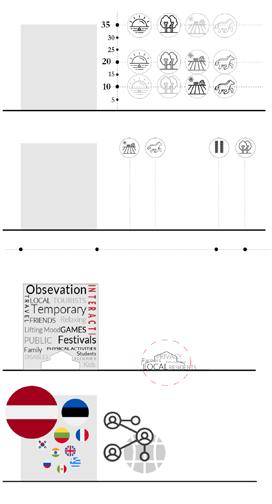


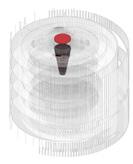
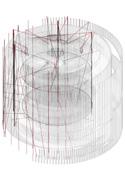
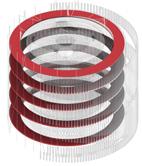



Year:2022
Competition Project
Members: Hamidreza Esmailnazari, Hosein Mosavi, Amir Hossein Saeedi Majd, Hossein Amery, Hossein Arshadi Soufiani, Ali Jamali, Maryam Baharvandi
My Role : 2D & 3D Diagram Development.

For centuries Isfahan city had been an oasis settlement, by dint of its surrounding fertile lands and prosperity. After the 1980s, the demand for water for industrial usage has raised gradually. The creation of large steelworks and other new industries along with the growing population, disable the scarce water resources to be utilized primarily for agriculture and now,Zayandeh River cannot supply all agriculture lands which are placed in along the river anymore, a landscape transformed to a skyscraper for answering the desire of access to the water and a layer of technology added for facilities agriculture with less use of water and energy. The skyscraper is formed by traditional technique which helps to provide high-quality organic fertilizer in the middle of desert Zayandeh River cannot supply all agriculture lands which are placed in along the river anymore, an agricultures landscape transformed to a skyscraper for answering the desire of local farmers in Isfahan who are forced to leave their farms due to the water shortage in Isfahan. The skyscraper is formed by combination of a traditional architectural passive way of living in the middle of desert and a layer of technology to facilities agriculture with scarcity of water. It retains the identity of the context; it is openand sustainable and try to protect threatened subcultural farmers in isfahan. The skyscraper is formed by the combination of a traditional architectural passive way, which facilitates living in the middle of the desert, and a layer of technology that provides agriculture with the minimum usage of water. Horizontal surfaces transformed into vertical surfaces. For solving light issues in a closed vertical environment, the transformation occurred by optimizing geometry according to the result of calculating the incident radiations and the amount of renewable energy that can be collected from photovoltaic or solar thermals.

Traditional Dovecotes in Isfahan were designed to produce large quantities of organic fertilizer for helping to farm in the middle of the desert and it was part of the traditional way of farming in Isfahan. In the central void of Dovecotes, thousands of holes were placed into the walls continuously for pigeons. The architecture method used in Dovecotes provides a suitable environment situation for pigeons in the middle of the desert in a passive way. The used material was unbaked mud brick plastered with mud. Timber was also rarely used. River
Zayandeh River to supply other areas, leaving their farms dry and threatening their livelihoods. The violent crackdown on protests was answered to them by the government in 2021. From another point of view in this historical region, which has extreme weather, architecture ways widely used for finding passive ways to solve relation between humans and nature. These architectural ways are bound with the culture and identity of the local people. Their lifestyle has formed inside different types of shelters to protect them in extreme weather situations.






The main logic and design approach of this project is determined by analyzing parametric environment modeling and traditional ways of solving environmental causes., UTCI diagrams Illustrate the thermal comfort model strictly for the outdoors.


Year:2021
Competition/Group Project
My Role: Design Process and Development, 2D Section and Diagrams
Members:Ali Nazari, Maryam Baharvandi, Mohammad Saleh Sorkhei, Shaghayegh Bayat, Maryam Azizi


After the years of both conscious or unconscious mechanization of the human mind as well as environmental colonialism, we now have every motivation to recover the forgotten nature, abandoned justice, and equity in overpopulated and dominant cities. Contemporary cities reflect such weaknesses and the frailties of ourselves. A layer beyond is a proposal based on a critical re-evaluation of nature capacities, regardless of the built environment. The examination of the relationship between the city and the natural environment is embedded within a secondary type of relation between the city and daily life.
“...ifthedesignismerelyaninducementtoconsume,thenwemustrejectdesign;if architectureismerelythecodifyingofabourgeoismodelofownershipandsociety, thenwemustrejectarchitecture;ifarchitectureandtownplanningismerelythe formalizationofpresentunjustsocialdivisions,thenwemustrejecttownplanning anditscities...untilalldesignactivitiesareaimedtowardsmeetingprimaryneeds. Untilthen,thedesignmustdisappear.Wecanlivewithoutarchitecture…” Superstudio,1971
Non-Plan
Non-planning provides an assumption for communities to criticize preconditioned urban programs and introduces a new way of human coexistence with nature. This, in turn, attempts to bring human beings back to the possibility of benefiting from the natural environment irrespective of city infrastructure. This is directly rooted in the realm of human existence and social freedom. A layer beyond then tries to criticize this urbanization and totalitarianism.
Dismantling planning, ignoring urban structures, and terminating material possession are intimately connected to the natural environment.

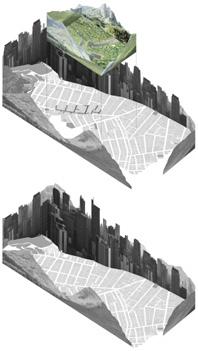



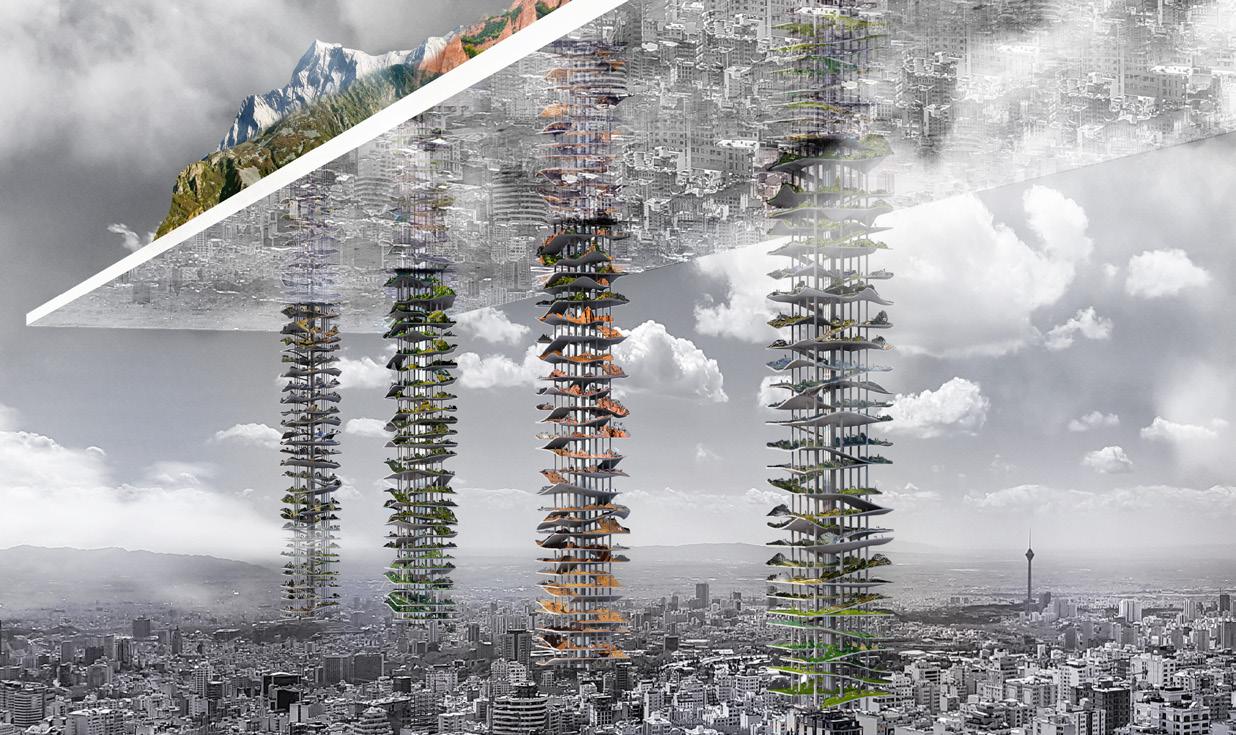
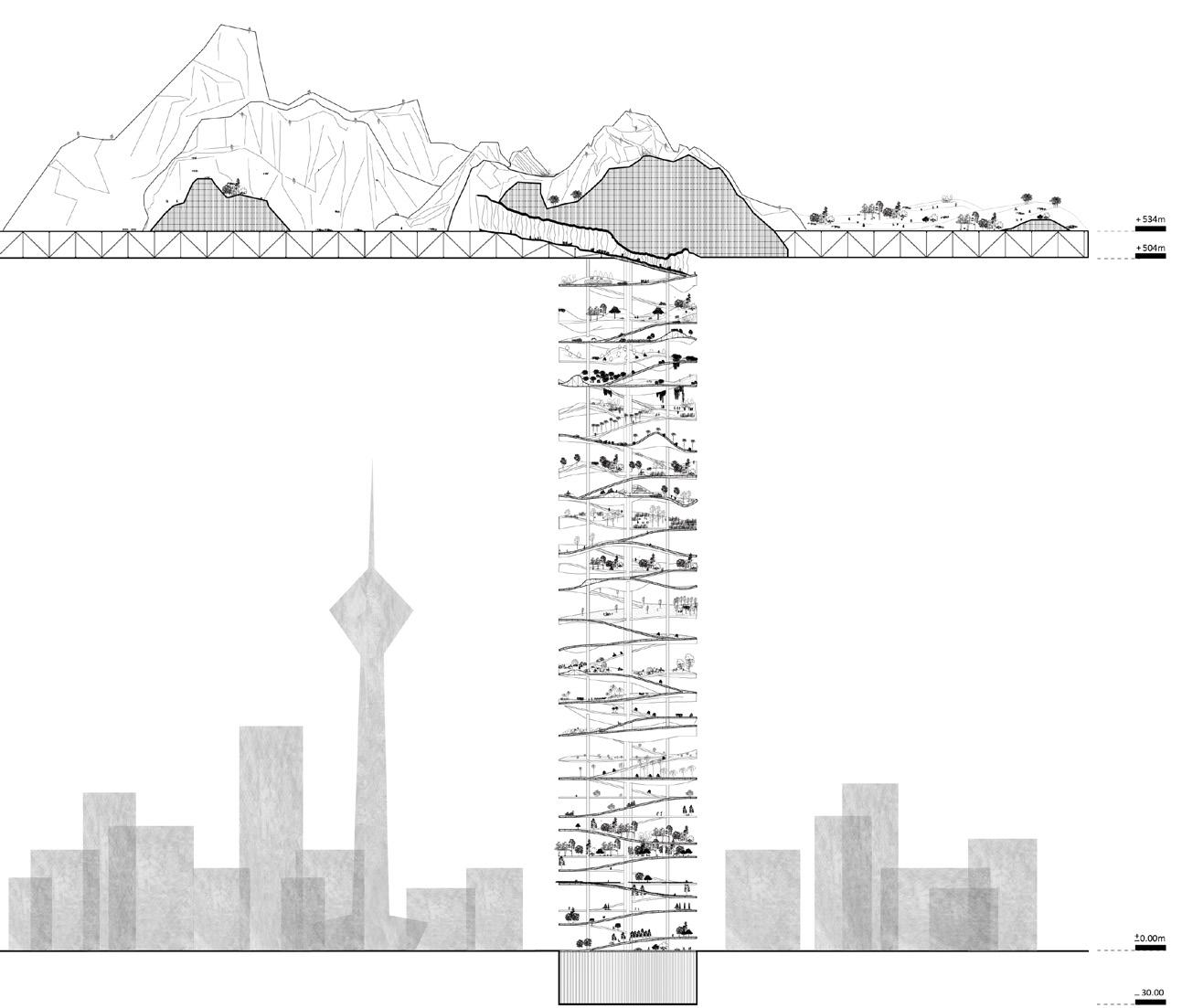
These homes are designed as wooden cube-like volumes suspended from a large-scale space frame structure. The project floats like a secondary layer above the forest canopy, creating a unique opportunity for a minimalintervention connection between humans and nature.
The initial concept was inspired by the oak tree xylem vessels found in the dense forest context. By closely analyzing the cellular structure and form of each vessel, a three-dimensional network was generated. These cylindrical 3D forms are integrated within a random wooden framework, merging together to create a flexible and dynamic spatial experience. The xylem-inspired elements are interwoven between the irregular wooden structures.
The handcrafted wooden frame acts not only as a large-scale space frame but also incorporates the xylem forms, which in some areas function as hydroponic systems. These systems support the growth of small suspended gardens above the forest floor.
This massive structure does more than serve as architecture above the site—it acts as a second landscape layer, hovering over the trees and contributing to a harmonious ecological presence.
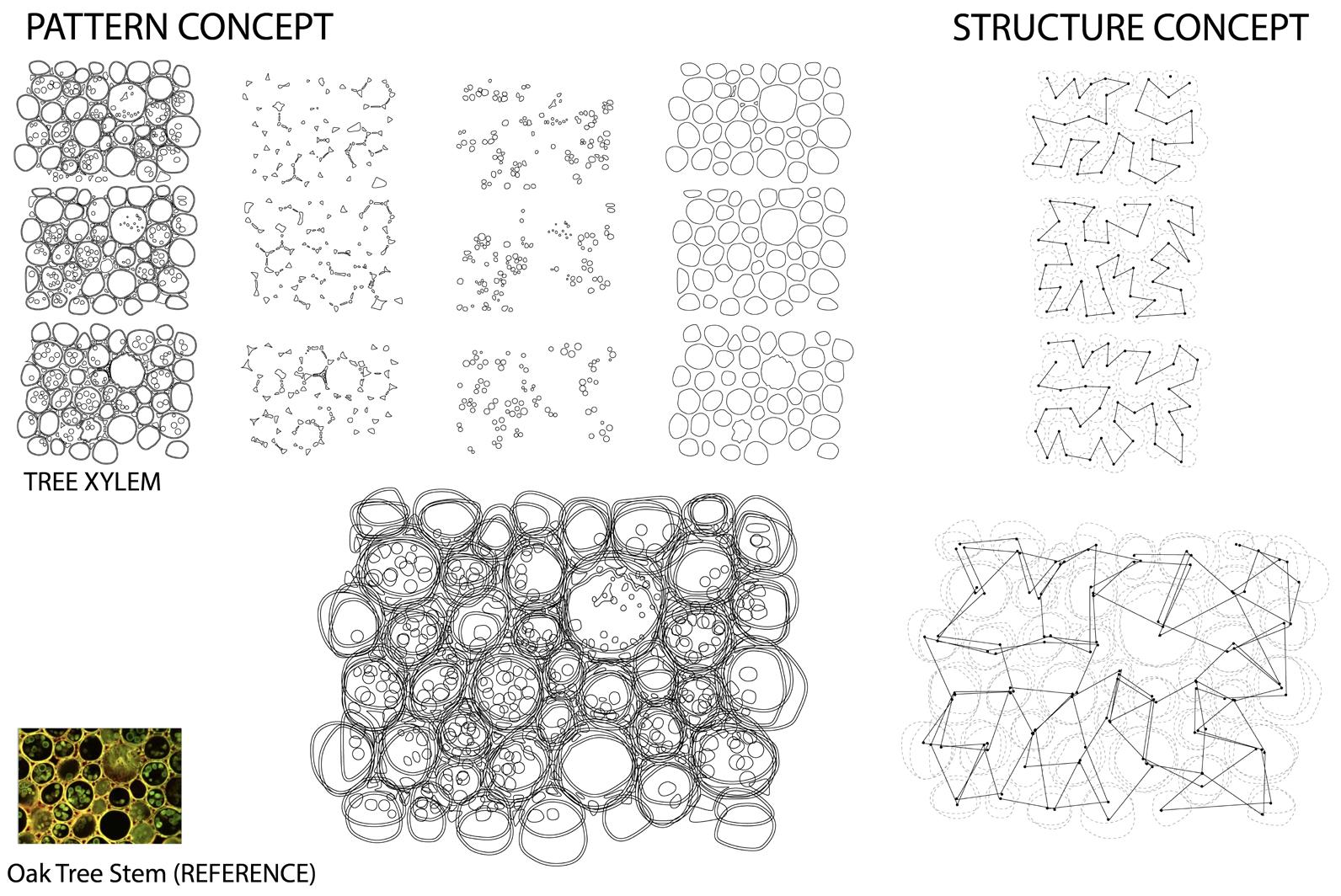


Year:2023
Location : Miami- United States
Academic/ Individual Project
Wynwood Hive is a mirror, window, and canvas that reflects, exposes, and exhibits Miami’s vibrant community.
Wynwood Hive is a mixed-use building that fuses architecture and urban context. From this formerly industrial Miami neighborhood, a vibrant and artistic community has grown, known for its colorful street art, creative atmosphere, and diverse community. Wynwood Hive is a cultural hub where art, music, and food converge.
The façade of the building mirrors Wynwood›s creative spirit and serves as a captivating canvas, reflecting the dynamic program of its surroundings. The north-facing facade captures the living spirit of the Wynwood by creating a visual dialogue between the building and its surroundings. This interactive canvas displays an abstract composition of windows which reflects the neighborhood›s vibrant street art and diverse community. Each window is a different scene that connect interior activity to the dynamic culture on the street.
The other surfaces of the building are sheathed with a mirrored curtainwall system that reflect the neighborhood and highlight its contextual significance. By day, it reflects the colorful and painting walls around it and at night, it transforms into a lantern.






The Wynwood Hive, situated in Wynwood, represents a captivating blend of industrial and contemporary design, transforming its interior into an artistic haven. At its core is a hanging cube, strategically placed as if it were a centerpiece in a gallery, symbolically echoing Wynwood’s industrial history. The exposed steel structure enhances the space, infusing it with a genuine and unfiltered atmosphere. The integration of a glazing system brings in natural light, establishing a dynamic interplay between the curated space and its surroundings. The cantilever design, extending dramatically beyond the main structure, serves both an aesthetic and functional purpose, creating covered outdoor spaces for a unique visual experience. Collectively, these architectural elements turn the interior into a gallery, narrating the story of Wynwood’s transformation. The space is not just an architectural marvel; it’s a convergence point for art, music, and food, offering visitors a unique and enriching experience. Wynwood Hive stands as a testament to the neighborhood’s evolution from an industrial past to a dynamic cultural hub, inviting all to partake in the vibrant energy of its cultural renaissance.



Re imagining urban housing is crucial for providing long-term social wellbeing amid environmental, economic, and health challenges. Sustainable housing must blend architecture, nature, and public experience and through diverse landscapes for urban resiliency and regeneration, using landscape attributes as a foundation for an Eco-friendly community.
Green Hub is a visionary project in Chicago’s West Loop that focuses on sustainable urban housing. It includes three main elements: planting trees for resilience, creating a green community, and offering adaptable housing to prevent gentrification. This project aims to improve the area’s environment, quality of life, and inclusivity.
Issue: Urban Resilience and Green Depletion
Addressing the rapid depletion of Chicago›s natural resources, particularly trees, amidst environmental challenges.
Concept: Harmony in Diversity
Fusing nature, architecture, and public experience, GREEN HUB transforms the West Loop into a thriving Eco-friendly community.
Solution: Threefold Approach for Sustainable Living:
a) Landscape Resiliency and Urban Forestry: Planting Thousand trees to combat climate change, flooding, and air pollution.
b) Community-Centric Development: Raising tree canopies, expanding green spaces, proposing sustainable housing, and enhancing intersections.
c) Adaptive Unit Typology: A forward-thinking blueprint incorporating mixed-use spaces, innovative housing, and adaptive units to prevent gentrification
In conclusion, GREEN HUB pioneers greener, resilient, and inclusive urban living, shaping a sustainable future for West Loop.

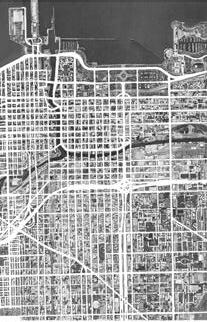
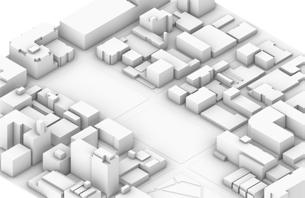
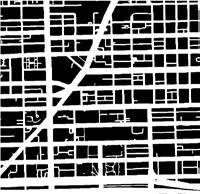



The project has become a hub for the West Loop with attractive neighborhood and greenery spaces. A more livable and environmentally friendly community comes by raising the canopy of the trees from the site, expanding roof gardens, proposing sustainable houses, street trees, new pocket parks, intersection improvement, and Street narrowing to additional greenery offer sustainable development and in visionary spaces.
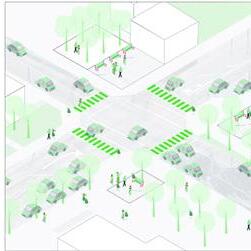
Intersections Strategies

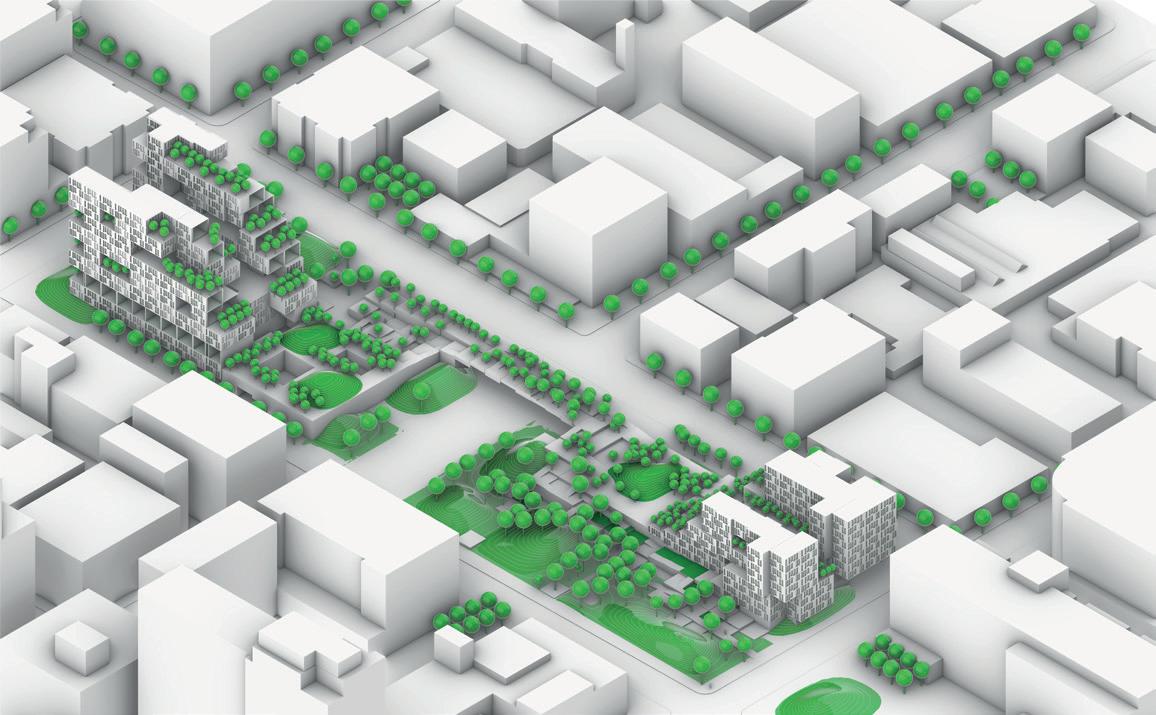
In constructing a forward-thinking blueprint for the West Loop, the principal objectives encompass the incorporation of mixed-use spaces, the introduction of innovative housing models, and, within these, the integration of adaptive unit typologies to meet evolving demographic needs and prevent gentrification. The meticulous programming foresees a harmonious blend of residential, retail, commercial, recreational, cultural, and public sectors to foster a balanced and vibrant urban ecosystem.
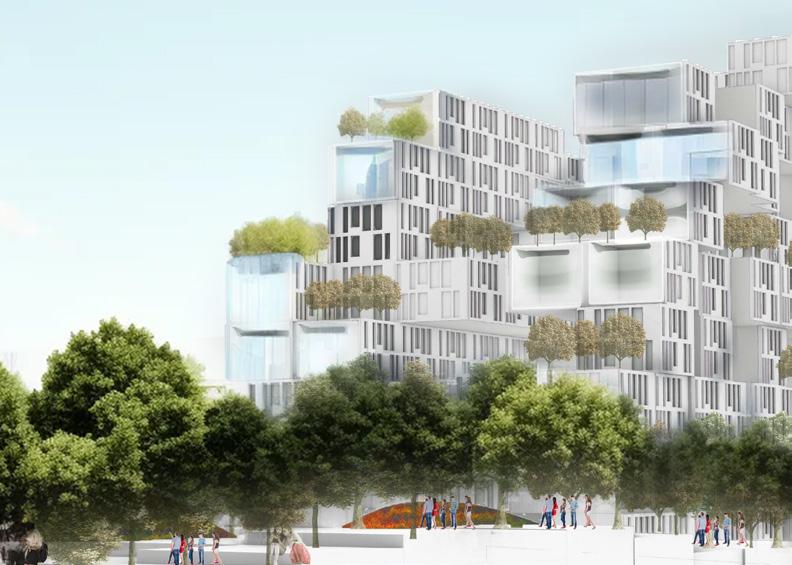



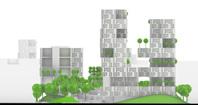

Code/ Occupancy
Year:2022
Academic/Group Project
My Role: Steel Structure System Design
Participating in Occupancy Code and Egressing, Precast Concrete Envelop System, and Details of Developable Surface System
Team: Maryam Baharvandi, Hamidreza Sohrabi, Isabella Smith, Christina Fernan
The challenge of this project is to make a basic design for a building with complex geometry. This design includes programming of the 8thfloor building and occupancy based on international building codes. In the second stage, each group member was responsible for designing a structured system, and I was responsible for designing the Steel structure. The third stage was the group design of the building envelope system in two types of curtain walls and precast panels, considering the percentage of glazing in each. And finally, design the developable surface system.
Envelope Systems: Precast Concrete Panel
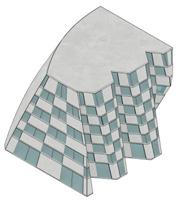
Envelope Systems: Precast Concrete Panel






Structural Systems: Steel


Structural Systems: Precast Concrete
Structural Systems: Mass Timber






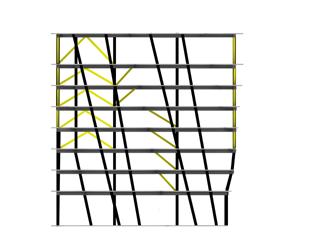
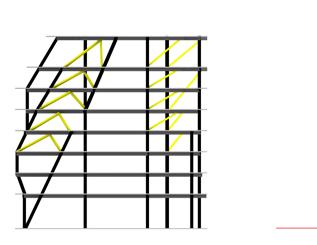
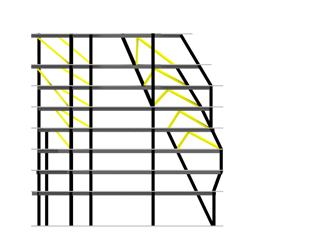






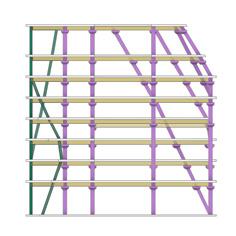



Structural Systems: Poured In Placed Concrete

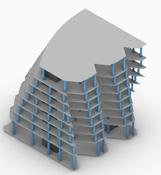

Program : The Pedestrian Analysis of Amol City old context
location : Amol
Year:2017
The Pedestrian Analysis of Amol City old context
Year:2017
Group Project


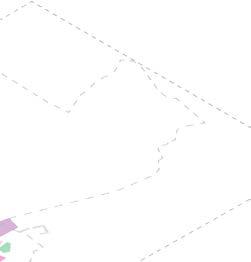

Group Members: Ali Mohammadi, Maryam Baharvandi
location : Amol
(Moyaralty of Amol)
My Role: All diagram development
Ali Mohammadi Maryam Baharvandi
Year:2017
Group Project
(Moyaralty of Amol)
Ali Mohammadi Maryam Baharvandi
historical architecture texture of the which is located in Mazandaran province research project, the goal was set to analysis of the old urban texture throughout time development process. The place demonstrated following picture, are indications of what needs achieve a revival in this part of the city improvement for pedestrians, are arrangements forbidding the vehicle›s movement in this
The site and historical architecture texture of the city of Amol which is located in Mazandaran province .s. this research project, the goal was set to analysis of the decay of the old urban texture throughout time and city development process. The place demonstrated in the following picture, are indications of what needs to be done to achieve a revival in this part of the city with an improvement for pedestrians, are arrangements regarding forbidding the vehicle›s movement in this area. central city area available infrastructure sorting the architectural age of neighborhoods neighborhoods boundaries geographical boundary


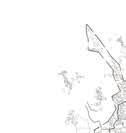

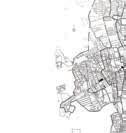

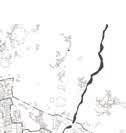




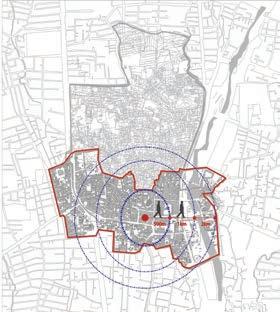

























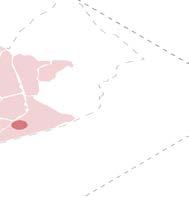

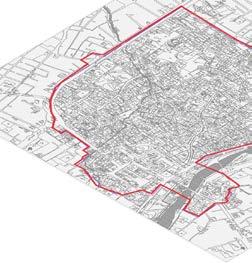


3 hour project
3 hour project
Program : Iraj Bastom TOPM
3 hour project
location : Kerman-Bam
Program : Iraj Bastom TOPM
Program : Iraj Bastom TOPM
location : Kerman-Bam
Year:2016
Year:2016
location : Kerman-Bam
Individual project
Year:2016
Category : Sketch and Creativity
3Hour Project
Individual project
Individual project
Iraj Bastam was a singer, who sang traditional musics, died becuase of Bam earthquake . The main concept for the project is showing both instability and spritual aspect together. Using both curve and oblique lines. The former due to the peace and spritual condition of the traditional musics and the latter becuase of the fact that earthquake is kind of imbalance and instability. Triangle on its vertex is the best choice of instability.
Iraj Bastam was a singer, who sang traditional musics, died becuase of Bam earthquake . The main concept for the project is showing both instability and spritual aspect together. Using both curve and oblique lines. The former due to the peace and spritual condition of the traditional musics and the latter becuase of the fact that earthquake is kind of imbalance and instability. Triangle on its vertex is the best choice of instability.
Iraj Bastam was a singer, who sang traditional musics, died becuase of Bam earthquake . The main concept for the project is showing both instability and spritual aspect together. Using both curve and oblique lines. The former due to the peace and spritual condition of the traditional musics and the latter becuase of the fact that earthquake is kind of imbalance and instability. Triangle on its vertex is the best choice of instability.


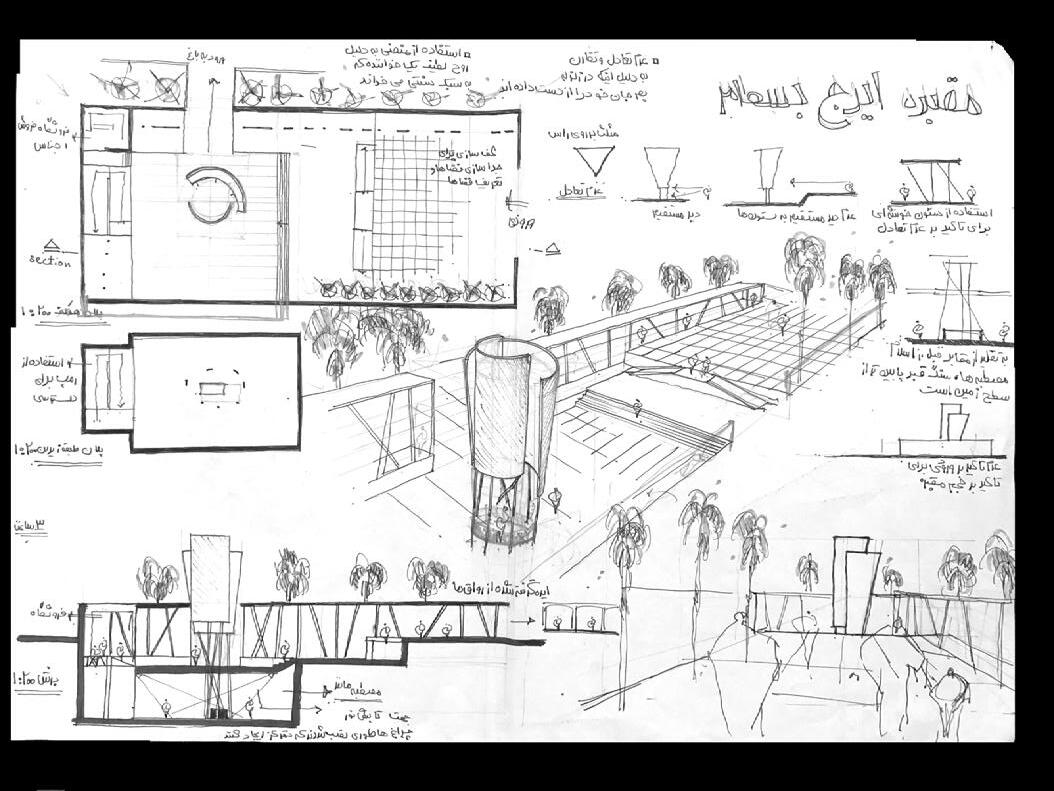
As a student, freehand drawing was part of my daily life.

